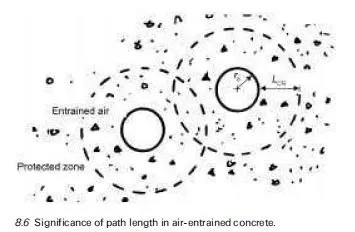Requirements and properties
Prestressing steels10 are used in prestressed concrete elements which are under tensile stresses due to their dead weight and service loads.11 The prestressing applied should prevent or permit only to a limited extent (partial prestressing) tensile stresses occurring within the concrete. Prestressing steels are subjected to static stresses on which dynamic components are sometimes superimposed. The steels should have a high elastic limit (0.01% proof stress) so that the stressing loss (related to the initial prestressing) due to relaxation and shrinkage remains low. This related stressing loss is lower the higher the elastic elongation of the steel during prestressing, which depends on the absolute value of the elastic limit of the prestressing steel.
Very high yield stresses, or 0.2% proof stresses, and tensile strengths are necessary to ensure that sufficiently high steel straining and thus compression stresses in the concrete are conserved after the contraction processes in the concrete are complete. During long-term static tensile loading, inelastic straining can occur even at stresses lower than those in short-term loading. The extent of this straining depends on several factors ± apart from the steel type ± including the applied stress value, temperature and time. This long-term behaviour leads to a reduction of the initial stressing level, and this is compounded by contraction of the concrete due to shrinkage and creep. The long-term behaviour of steel can be described either by creep (length change at constant stress) or relaxation (stress reduction at constant gauge length). Therefore, for prestressing steels, certain conditions concerning creep behaviour and relaxation must be met.
Loads from traffic may lead to tensile fatigue in the prestressing steels in prestressed concrete structures, which will be superimposed on the prestressing loads. As a result, certain requirements must be fulfilled with respect to fatigue strength. It has to be assumed that for all prestressing methods, the measures necessary for anchorage, for example bending, bulging and keying, will significantly reduce the fatigue strength of the prestressing steels used. The behaviour of prestressing steels in corrosive conditions is also of the utmost importance as all prestressing steels are prone to hydrogen-induced stress corrosion cracking, depending on the environmental conditions. All steels of this type should therefore be adequately resistant towards the initiation of hydrogen- induced cracks under site conditions and during service.


